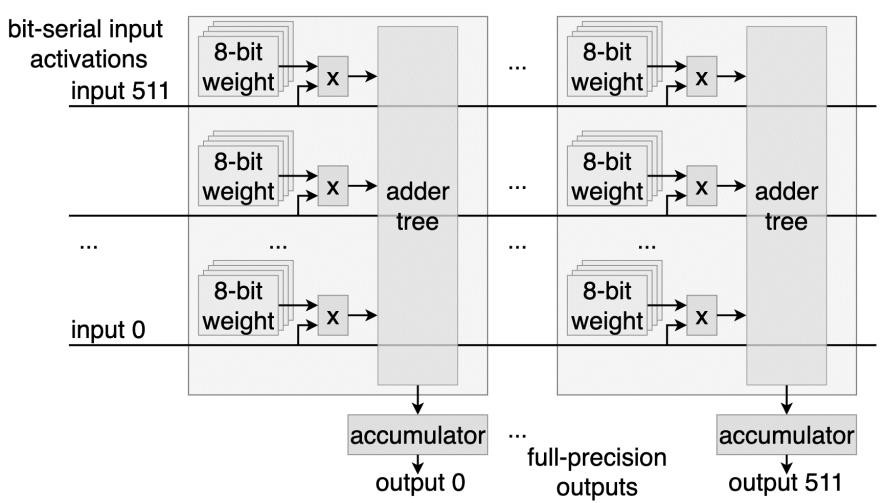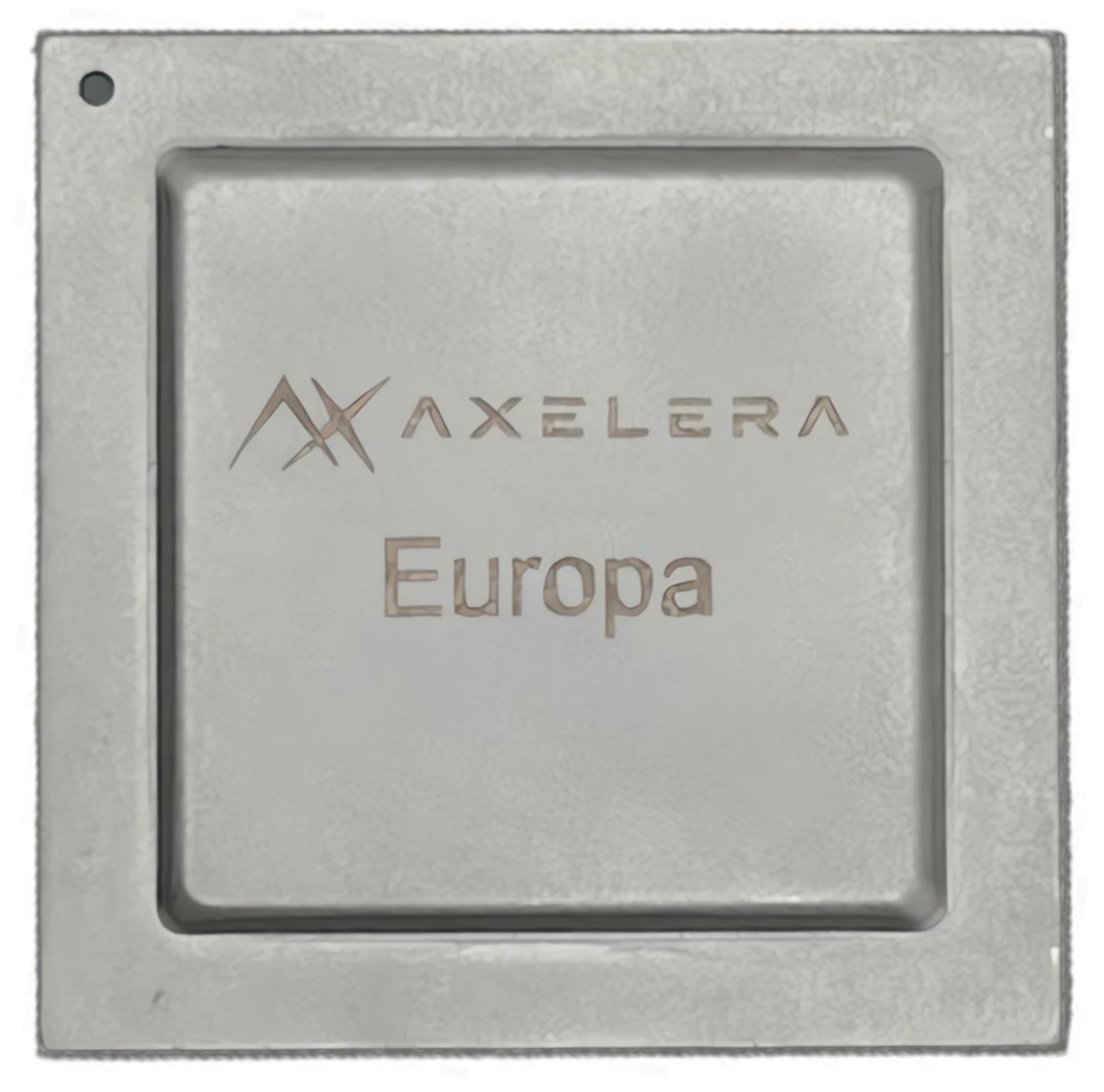Edge-AI specialist Axelera is moving upmarket. The company’s new Europa AI accelerator (NPU) triples the raw performance of its Metis NPU to 629 TOPS (and more than quadruples its Yolo V8 throughput), positioning it for automotive, robotics, and even data-center applications. Slated to ship in the first half of 2026, the new device adds capabilities to handle more of the video-processing pipeline. As with its earlier chip, Axelera differentiates Europa by power efficiency and cost-effectiveness, particularly compared with GPU-based AI acceleration.
In-Memory Computation
Axelera achieves power efficiency by employing in-memory computing (IMC), intertwining digital multiply-accumulate (MAC) logic and SRAM cells. Putting the two close together and integrating sizable memories reduces the energy used to move data. For models and data too large for on-chip memory, Europa also features a 256-bit LPDDR5 interface supporting 64 GB of external memory. A single Europa can handle a large language model (LLM) with 32 billion parameters.
Europa Chip Architecture
Europa integrates eight of Axelera’s AI cores. Each core has an IMC block, local memory, and three controllers/engines. The lattermost execute activation functions, pooling, and other tasks that don’t map to the IMC. The IMC divides into memory banks that share access to the MAC units. While one bank pumps activations through the MACs, the other three can load weights for future computations, as Figure 1 shows. Whereas Metis supported only eight-bit integers (INT8), Europa also supports INT4 and INT16.

Alongside the AI cores, Europa integrates 128 MB of SRAM, a quad-core RISC-V system controller, two RISC-V vector-CPU clusters, and a video decoder, as Figure 2 shows. Axelera added the vector CPUs and decoder—functions not included in Metis—to enable customers to offload video pre- and postprocessing from the host. On paper, the added functions decrease Europa’s TOPS/W compared with Metis, but they should raise system efficiency in practice by offloading tasks that would otherwise run on the host. Axelera rates Europa’s average power at 45 W.
For any AI semiconductor company, software is critical to success. Building on the Metis design, Europa benefits from the infrastructure—Voyager SDK—Axelera has developed. The company offers a model zoo, non-neural libraries, and tools for using its NPUs with Linux and with AI and graphics software, such as PyTorch and OpenCL.
Bottom Line
Axelera’s main competition is Nvidia, which offers GPUs and CPU-GPU combination chips and is the default starting point for AI designs for many developers. However, the startup provides a power-efficient alternative that works with a customer’s preferred host processor. That will be an Intel x86 processor in most cases, offsetting Axelera’s power efficiency but providing a broad software ecosystem and compatibility with customers’ previous designs.
The four-year-old NPU company has gained traction among customers performing video analytics using convolutional neural networks (CNNs). Although Europa can execute LLMs and vision transformers, it’s likely to be initially used in CNN-based computer vision, as Metis has been. Instead of serving embedded systems handling only a few video feeds, Europa will accelerate workstations or appliances analyzing more streams. It will provide an upgrade to Metis customers and an alternative to developers seeking a power-efficient accelerator to complement a workstation or server host.

